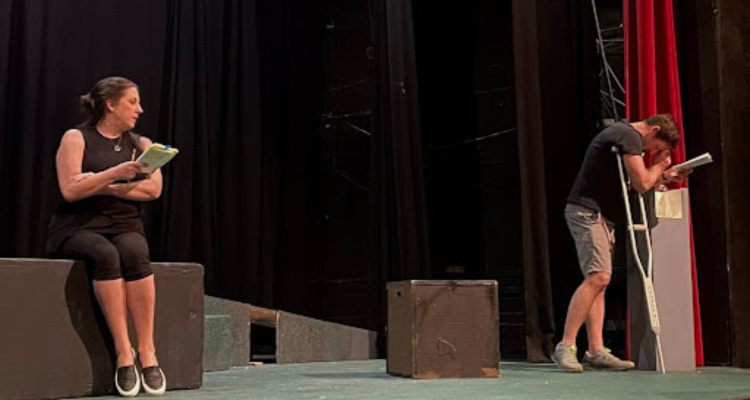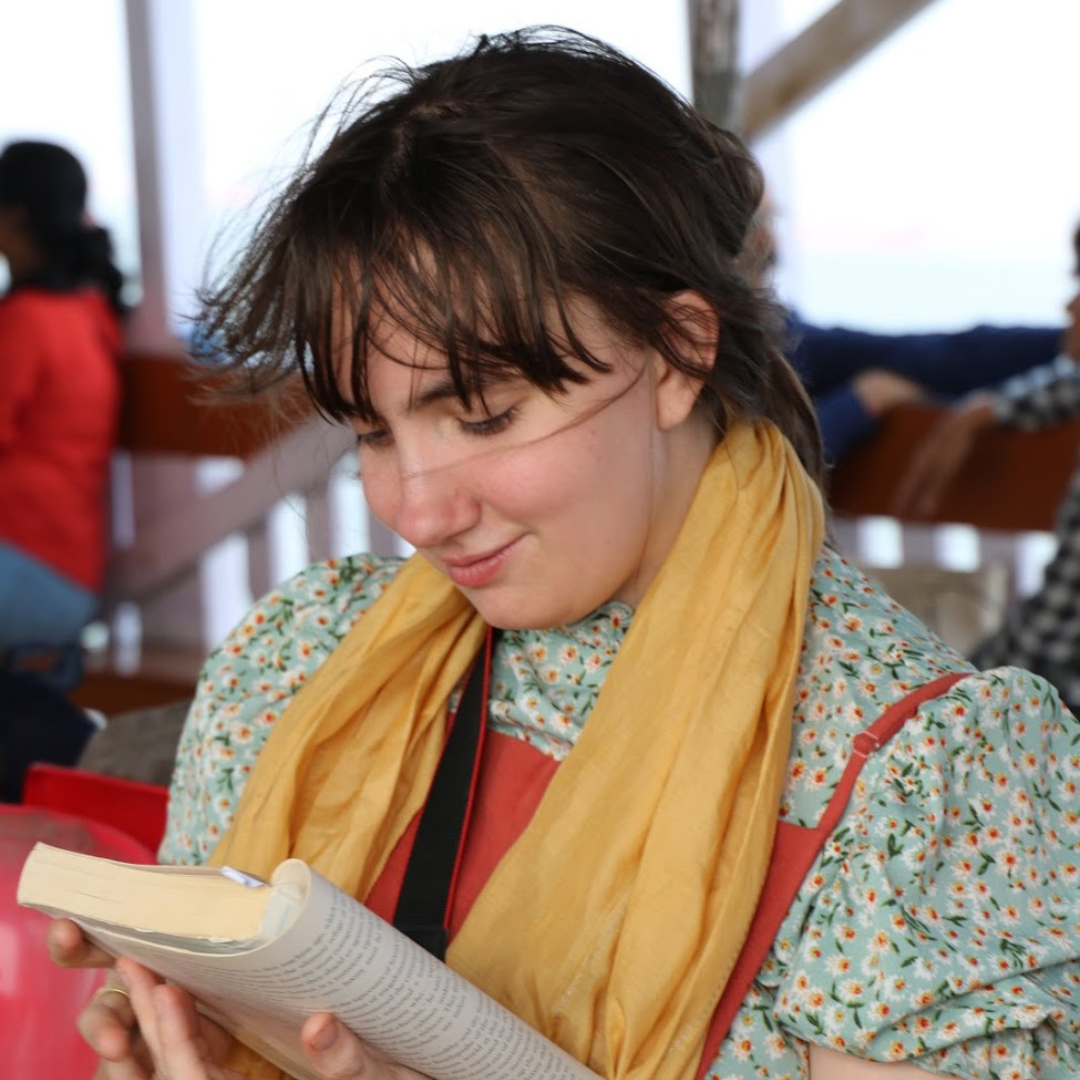The year was 1969, and the Towngate Theatre was about to stage its first-ever show: Cat on a Hot Tin Roof. Now, more than five decades later, the Towngate Theatre is about to stage the show again in memory of one of its first performers and founders, Bettie Steele.
Crafting a Stage
The journey to Towngate started at The Carriage House Theatre in Oglebay Park, where the troupe was known as the Park Players. When the Carriage House burned down on April 26, 1965, the Players had no dedicated home stage. They eventually drifted to the Pennsylvania Railroad station, performing in the parcel and baggage room, picking up the name Parcel Players.
When Bettie Steele spotted the Zion Lutheran Church for sale in Center Market, she knew it would be a great place for a permanent theatrical home. She brought the proposal to Hal O’Leary, who’d just been hired by Oglebay Institute. He was less than thrilled at the idea of turning a church into a theater. But, Bettie convinced him to come take a look, and the decision was as good as made. Hal arranged for Oglebay to rent the place for one year for only $1.
All that was left was to name it. There were two camps, says Tim Thompson, current director of the theater. “They were thinking of Town Players, since they were downtown. There was also this idea of the Gate Theatre, which would be named after the one in Dublin. Bettie is the one that said ‘why don’t we put it together?’” After a successful first season, launched by Cat on a Hot Tin Roof, the theater was officially purchased and thus, Towngate was born.
The first season at Towngate was a massive group effort. The whole thing was cobbled together into something great. The audience seats were picked up from an old Warwood cinema and the lights were made from coffee cans. “It was just very bohemian,” says Tim.

“The Cat” on That Hot Tin Roof
The Park Players knew they had to open their first season strong. It was decided that Cat on a Hot Tin Roof by Tennessee Williams, a relatively new play that opened on Broadway only ten years before, would kick off the season. Bettie Steele was cast as Maggie “The Cat.”
“When she played Maggie, she really didn’t think she was suited for it. And David Judy, the director, gave her a move, a stance, a posture, a position and she said it just clicked right in, all of a sudden she found Maggie,” said Tim. Bettie transformed from not trusting herself in the part to encompassing Maggie so thoroughly that she was able to convince people that she was utterly in love with Peter Whitaker, who played Brick. Tim recalled one person who knew Peter, and while finding him talented and brilliant, did not like him very much. This person said to Tim, “I knew Bettie must be a great actress. She convinced me she loved Peter.”
Bettie Steele had also directed a fair number of shows, most notably, The Runaways. It was staged for the yearly section of plays put on for children/teen actors, the Parcel Players (the name hearkening to the early days of many of Towngate’s founders). Tim recalls walking into the theater and witnessing Bettie leading a rehearsal.
“They were all laying around the room, and it was real quiet, and she was talking, and she was taking them on a journey, a sensory journey.” Bettie guided them through the lives of the characters, all homeless children. She had them close their eyes as she attempted to build up the world in their minds. Afterward, Tim asked her what she was doing. “She told me that you have to be able to step into the shoes of these people and they can’t, maybe, on their own, imagine what it’s like to be on the streets.” Tim talked about how Bettie never shied away from challenging young actors with tough, heavy material. It was her belief that the focus should be on “good theater, great plays” even if the content was harsh.
She was known to always fight for her ideas for a character. She was, always, a dedicated actress. “She did deep dives into plays, she didn’t tread lightly.”
Tim says that while it was “like magic” every time Bettie was onstage with Hal O’Leary, it was always a process to get there, “they butted heads.” In the end, they pushed each other to be better, “Hal loved someone who would battle him on ideas and choices. She would state her purpose, her intentions.” She had to fight to take up space, to make her choices. “She was the one woman who directed plays, in a time where it was mostly men.” She never backed down from a challenge. She helped to build a theater while raising her two children and participating in local nonprofits and organizations. When they were grown, she began appearing in more and more shows at Towngate, and other theaters in the area. She also went on to go to West Liberty State College to get a bachelor’s and to the University of Pittsburgh to get a master’s in Fine Arts.
Tennessee Williams’ Tale
Cat on a Hot Tin Roof by Tennessee Williams is a story about tumultuous relationships and how longing and disdain seem to go hand in hand. The audience is dragged along through a day in a wealthy Mississippi family’s life. The patriarch, Big Daddy, is celebrating his birthday with his family and wife, Big Mama. Both his sons are in attendance. Gooper (“Brother Man”) and his wife Mae (“Sister Woman”), with their brood of five children. There is also Brick, a former football star, who is married to Maggie “The Cat.” What follows, over three acts, is the tension of secrets being dragged out through gritted teeth.
Possibly one of the biggest players in the show never steps foot on stage. Brick’s former best friend and football teammate, Skipper, has committed suicide. He haunts the characters. Namely, Brick, who must contend with the fact that just before he died, Skipper called Brick to confess his romantic feelings, and Brick simply hung up on him. Brick drowns his disgust for himself and what happened in liquor. Maggie, aware of this, and knowing the family’s desire to see her bear a child, finds herself fighting for her husband against his relationship with a dead man. All that and Big Daddy is dying of cancer, but everyone is keeping it from him and Big Mama. The hurricane of emotions throughout the play is bound to sweep the audience up into the stifling heat and emotions of this Southern drama.
When asked if he could describe Cat on a Hot Tin Roof in one word, Tim said “mendacity.”
As one of the more challenging themes that Cat on a Hot Tin Roof, queerness is unavoidable when discussing the play. Tennessee Williams himself was a gay man, and that influenced his work. Many of Williams’ plays and short stories deal with the secrecy that the gay community had to live in throughout his life. The audience reception to the queer content of Cat on a Hot Tin Roof would have been very different from Towngate’s first staging to now. “This was written at a time when you wouldn’t be ‘out’,” says Tim. When staged now it is notable how “we’ve come a long way, it has to be accepted.”
In the time span of 50 years, the way we view the story has completely changed. “It’s a period piece.” The audience is made to step into a time we have outgrown. Tim hopes the show, and its handling of gay characters, will provide a learning opportunity for the audience and facilitate dialogue.
“The name of the play, Cat on a Hot Tin Roof, it’s not just Maggie, they’re all walking on eggshells.”
These themes still pack the punches they did in 1969.
A New Staging
As Tim was preparing for Towngate’s latest season, he wanted to honor Bettie’s legacy and thought a staged reading of Cat On a Hot Tin Roof would be a beautiful way to do that. “Hal had done a couple of staged readings of King Lear and Death of a Salesman, with limited movement, and they were really successful,” said Tim, “So I thought, let’s do that.”
Tim shared his idea with fellow performers, Vince Marshal and Alexander Hill, who were eager to be a part of the production. When VInce mentioned that Gretchen Schneider would be back in town, visiting from New York City, at the time the show could be put on, Tim said it “felt like a perfect storm.”
This marks the third time Cat on a Hot Tin Roof has graced the Towngate stage. Two cast members, John Reily and Dee Greg, were in the production when it was staged for the second time, in 1997.
Denis Fox directs. The cast is as follows: Skyler Dye as Lacey, Makayla Carney as Sookey Gretchen Schneider as Maggie, Alexander Hill as Brick, Rachel Thompson as Mae, Vince Marshal as Gooper, Dee Gregg as Big Mama, Tim Thompson as Big Daddy, Bob McCoy as Sonny, Rylee McCoy as Trixie, Lyric Hill as Dixie, Dennis Fox as Reverend Toker, John Reilly as Dr. Baugh.
Towngate’s reading of Cat on a Hot Tin Roof promises to be an entertaining evening honoring one of the theater’s biggest and earliest supporters. The performance will be staged on Friday, Sept. 29 at 7 p.m. Tickets are $5 and available online through the Oglebay Institute website, by calling 304-242-7700, or at the box office if still available. Box office opens one hour before curtain.
References
Williams, Tennessee. Cat on a Hot Tin Roof. Dramatists Play Service Inc, 1986.
Als, Hilton. “The Man Who Queered Broadway | The New Yorker.” The New Yorker, The New Yorker, 9 Oct. 2014, https://www.newyorker.com/books/page-turner/man-queered-broadway.










